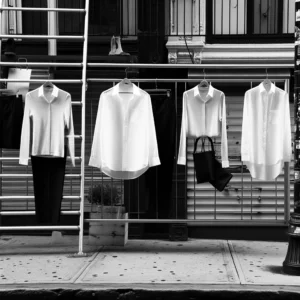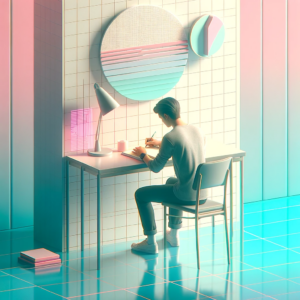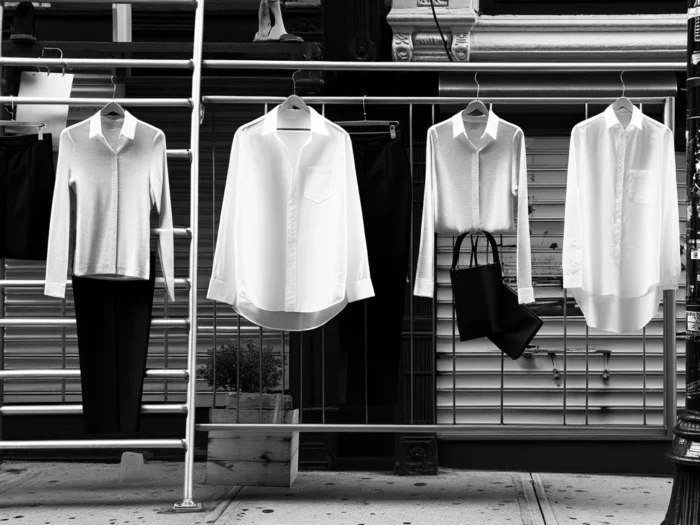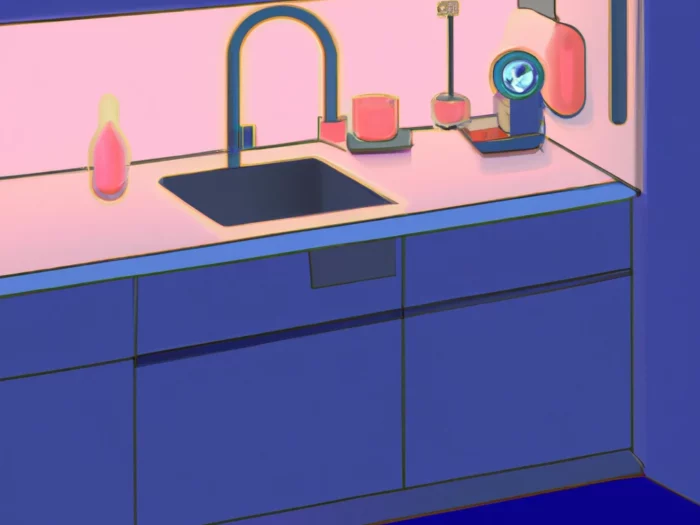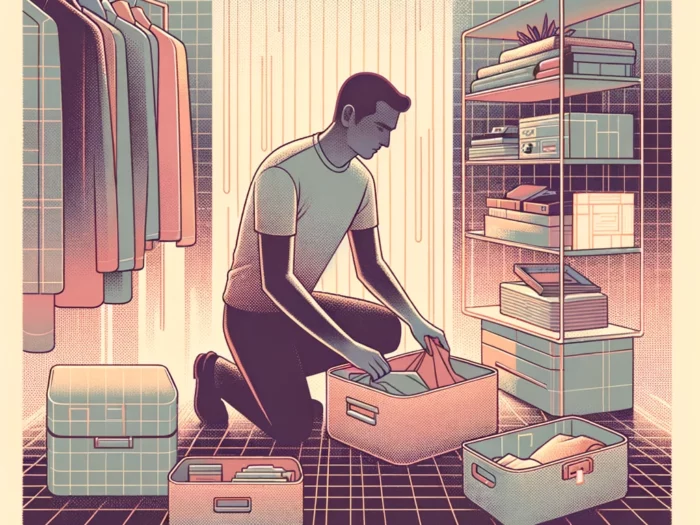In today’s world, where excess often dominates, the allure of minimalism stands out, offering a breath of fresh air. But when we delve deeper into the realm of minimalism, we encounter a nuanced concept known as the “minimalist aesthetic.” This isn’t just about having fewer possessions; it’s an entire visual and philosophical approach that champions simplicity, clarity, and purpose. Over recent years, this aesthetic has woven its way into various facets of our lives, from the art we admire to the spaces we inhabit, and even the digital platforms we frequent.
The minimalist aesthetic, with its serene palettes and uncluttered spaces, has become a sought-after design choice for many. But it’s more than just a trend; it’s a reflection of a collective yearning for simplicity amidst the chaos of modern life. From the sleek galleries of contemporary art museums to the clean lines of modern architecture, this aesthetic has firmly established its roots in our cultural fabric.
- Historical Context of The Minimalist Aesthetic
- Core Principles of Minimalist Aesthetic
- Minimalist Aesthetic in Art and Design
- The Minimalist Aesthetic in Modern Living
- Fashion and the Minimalist Aesthetic
- Digital Minimalism
- Critiques and Misconceptions
- Practical Steps to Embrace the Minimalist Aesthetic
- Conclusion
Historical Context of The Minimalist Aesthetic
The minimalist aesthetic, while seemingly modern, has deep historical roots. Its principles can be traced back to the Zen philosophies of Japan, which emphasized simplicity, purity, and tranquility. These principles were not just about decluttering physical spaces but also about achieving mental clarity and spiritual peace.
Fast forward to the 20th century, and we see the rise of minimalism in the art world. Artists like Donald Judd, Agnes Martin, and Frank Stella began to challenge traditional notions of art, stripping down their works to basic forms and colors. This wasn’t art that told intricate stories or captured detailed landscapes; instead, it invited viewers to appreciate the beauty in simplicity and to find meaning in the mundane.

But it wasn’t just the art world that saw this shift. Architects like Ludwig Mies van der Rohe championed the “less is more” approach, creating structures that were both functional and aesthetically pleasing in their simplicity. Designers, too, began to eschew ornate patterns in favor of clean lines and neutral palettes.
Throughout history, various key moments and influential figures have shaped and refined the minimalist aesthetic, adapting it to the changing times while staying true to its core principles. Whether it’s the serene rock gardens of ancient Kyoto or the sleek, geometric sculptures of the 1960s, the minimalist aesthetic has always been a celebration of simplicity, intentionality, and profound beauty.
Core Principles of Minimalist Aesthetic
At the heart of the minimalist aesthetic lie a few guiding principles that serve as its foundation. These principles aren’t just about creating visually pleasing designs; they’re about fostering a deeper understanding and appreciation for the essence of objects, spaces, and art. Let’s delve into these core tenets and see how they shape the minimalist world.
- Simplicity: Often, the most profound statements are made in the quietest ways. Simplicity is about stripping away the unnecessary, leaving only what truly matters. It’s not about deprivation, but rather about honing in on the essence. In art, this might mean a canvas painted in a single hue, challenging the viewer to find depth and emotion in the monochrome. In design, it’s about clean lines and uncluttered spaces that breathe and resonate.
- Functionality: Every element in a minimalist design has a purpose. There’s no room for superfluous details or decorative fluff. This principle is especially evident in minimalist architecture and interior design, where every piece of furniture, every light fixture, is chosen not just for its aesthetic appeal but for its function. It’s a celebration of design where form follows function, leading to spaces and objects that serve their purpose efficiently and elegantly.
- Intentionality: Perhaps the most profound of the minimalist principles, intentionality is about making deliberate choices. It’s about understanding why you’re drawn to certain designs, colors, or objects. Every element in a minimalist space or artwork is there for a reason, chosen with thought and purpose. This intentionality extends beyond just design; it’s a way of living, of choosing to surround oneself only with things that add value and meaning.
Across various disciplines, from visual arts to fashion, these principles manifest in unique ways. In photography, it might be about capturing the vastness of a landscape with a single, solitary subject. In fashion, it might be a capsule wardrobe that mixes and matches a few essential pieces to create a multitude of outfits. Regardless of the medium, the minimalist aesthetic always circles back to these foundational tenets, offering a perspective that’s both refreshing and deeply resonant.
Minimalist Aesthetic in Art and Design
The world of art and design has been profoundly influenced by the minimalist aesthetic, with artists and designers embracing the “less is more” philosophy to create works that are both visually striking and deeply evocative. This section delves into how this aesthetic has shaped these domains, bringing forth a new perspective on what it means to convey emotion and meaning.
Minimalist Art
Minimalist art, often characterized by its simplicity and use of monochromatic palettes, challenges traditional notions of what art should be. It strips away the extraneous, focusing instead on basic geometric shapes, lines, and colors.
Artists like Agnes Martin, with her serene grids, and Donald Judd, known for his geometric sculptures, have exemplified this approach. Their works, though seemingly simple, invite viewers to engage deeply, finding layers of emotion and meaning in the sparse presentation.
Minimalist Sculpture
Sculpture, in the hands of minimalist artists, becomes a play of form and space. Artists like Dan Flavin, who used fluorescent light tubes to create spatial compositions, or Richard Serra, known for his massive steel structures, showcase how minimalism can redefine our understanding of materials and spaces.

Their works, often large-scale, interact with their surroundings, making viewers question the relationship between the object and the space it occupies.
Minimalist Design
Beyond the world of fine art, the minimalist aesthetic has left an indelible mark on design, from architecture to product design. Architects like Tadao Ando and John Pawson have created spaces that, through their simplicity, evoke a sense of calm and serenity.
Their buildings, often using raw materials like concrete and wood, blend seamlessly with their surroundings. In product design, brands like Muji and Braun have championed minimalist principles, creating products that are both functional and aesthetically pleasing.

The contributions of these iconic figures, and many others, underscore the power and versatility of the minimalist aesthetic. Whether it’s a painting that uses a single color to convey depth or a building that stands as a testament to the beauty of raw materials, the minimalist approach in art and design continues to inspire and challenge, proving that sometimes, less truly is more.
The Minimalist Aesthetic in Modern Living
The minimalist aesthetic, while deeply rooted in art and design, has seamlessly permeated our daily lives, influencing everything from the buildings we inhabit to the products we use and the lifestyles we lead. This section explores how the principles of minimalism have been adapted and integrated into modern living, offering a fresh perspective on what it means to live minimally in today’s world.
Architecture and Minimalist Homes
Modern architecture has seen a shift towards clean lines, open spaces, and a focus on functionality. Minimalist homes, often characterized by their use of natural materials, large windows, and a neutral color palette, prioritize space and light.
Renowned architects like Mies van der Rohe with his iconic Farnsworth House or the works of Peter Zumthor showcase the beauty of simplicity in design. These structures, while sparse in decoration, offer a sense of tranquility and connection with the surrounding environment.

Interior Design and Decor
Inside these homes, the minimalist aesthetic continues to reign. Gone are the days of cluttered spaces and ornate decorations. Today’s minimalist interiors emphasize open spaces, functional furniture, and a curated selection of decor.
The focus is on creating a harmonious environment where every item has a purpose. Brands like IKEA have championed this aesthetic, offering products that combine functionality with sleek design.
Daily Routines and Lifestyles
Beyond physical spaces, the minimalist aesthetic has influenced daily routines and lifestyles. People are increasingly seeking simplicity in their daily lives, whether it’s through decluttering, adopting capsule wardrobes, or practicing mindfulness.
The idea is to eliminate the unnecessary, allowing more time and energy for what truly matters. This approach to living, influenced by the minimalist aesthetic, promotes intentionality, mindfulness, and a focus on quality over quantity.
The allure of the minimalist aesthetic in modern living is undeniable. Whether it’s the serenity of a minimalist home, the functionality of well-designed products, or the clarity brought about by a simplified lifestyle, the principles of minimalism offer a refreshing counterpoint to the often chaotic and consumer-driven world we live in.
Fashion and the Minimalist Aesthetic
Fashion, an ever-evolving realm, has seen waves of extravagance, color, and maximalism. Yet, in recent years, the pendulum has swung towards a more restrained and thoughtful approach, giving rise to the minimalist fashion movement. This section delves into how the minimalist aesthetic has reshaped the fashion industry, emphasizing durability, simplicity, and elegance over fleeting trends.
Emphasis on Quality and Timelessness
At the heart of minimalist fashion lies a commitment to quality. Instead of rapidly changing seasonal trends, the focus shifts to creating pieces that stand the test of time, both in style and durability.
Fabrics are chosen for their longevity, and designs lean towards the timeless, ensuring that each piece can be a staple in one’s wardrobe for years to come.
Neutral Palettes and Simplified Designs
Minimalist fashion often embraces a neutral color palette, with whites, blacks, grays, and earth tones taking center stage. These colors not only exude a sense of calm and sophistication but also offer versatility, allowing for easy mixing and matching. The designs, devoid of excessive embellishments, prioritize fit and form, resulting in garments that celebrate the human silhouette in its purest form.
Notable Proponents of the Aesthetic
The fashion world has seen several designers and brands championing the minimalist aesthetic. Designers like Jil Sander and Helmut Lang have been pivotal in pushing forward this simplistic yet impactful style. Brands such as COS and Everlane have also risen in popularity, offering consumers minimalist designs that don’t compromise on quality.
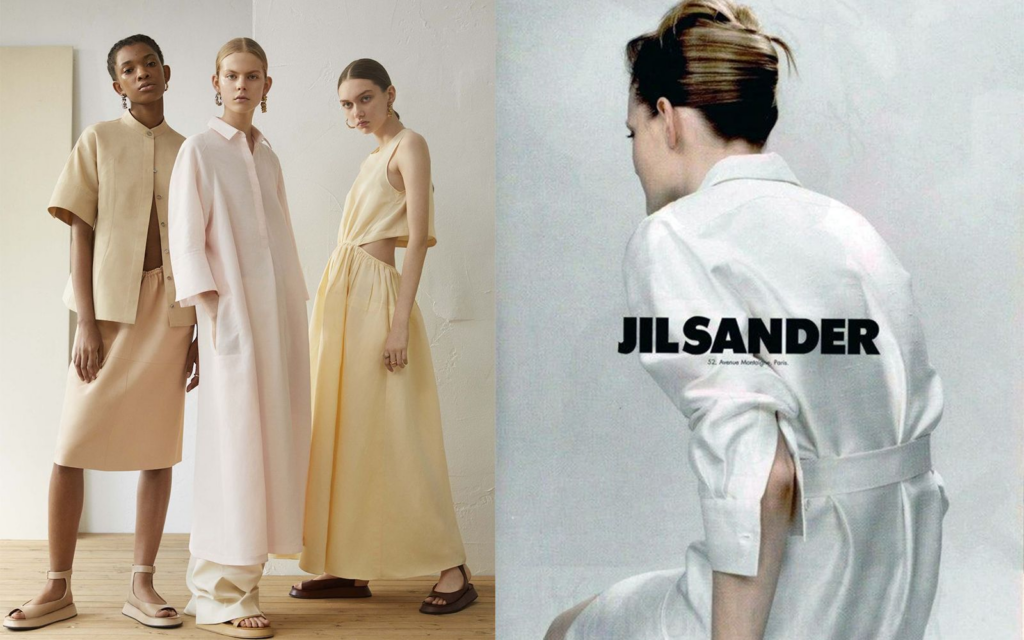
In a world where “more” often dominates the narrative, minimalist fashion offers a refreshing alternative. It invites individuals to find beauty in simplicity, to invest in pieces that matter, and to embrace a style that, while understated, makes a profound statement.
Digital Minimalism
In today’s hyper-connected world, where screens dominate our lives and notifications never cease, there emerges a counter-movement: digital minimalism. This section delves into how the principles of minimalism, typically associated with physical spaces and objects, are being applied to our digital lives, offering a respite from the constant barrage of information and fostering a more intentional relationship with technology.
Simplifying the Digital Landscape
Digital minimalism isn’t just about reducing screen time; it’s about curating our digital experiences to align with our values. This can be seen in the rise of minimalist app designs that prioritize user experience over flashy features.
Apps with clean interfaces, straightforward functionalities, and no unnecessary frills are gaining traction. They serve their purpose without overwhelming the user, embodying the “less but better” philosophy.
Digital Detox and Mindful Consumption
Beyond design, digital minimalism also touches upon our consumption habits. The practice encourages regular digital detoxes—periods where one intentionally disconnects from digital devices.
This not only reduces stress but also allows individuals to reconnect with the physical world, fostering mindfulness and presence. It’s about choosing quality over quantity, even in the content we consume, ensuring that our digital engagements are meaningful and enriching.
Balancing Technology with Simplicity
While technology has undeniably brought numerous conveniences into our lives, it also presents challenges, especially when it comes to maintaining mental well-being. Digital minimalism seeks to strike a balance. It doesn’t advocate for completely discarding technology but emphasizes using it in a way that aligns with minimalist principles. It’s about harnessing the benefits of technology without letting it overshadow the simple joys of life.
In essence, digital minimalism is a call to action. It invites us to evaluate our relationship with technology, to declutter our digital spaces, and to use technology as a tool rather than letting it dictate our lives. It’s a journey towards a more intentional and fulfilling digital existence.
Critiques and Misconceptions
The minimalist aesthetic, while widely admired, is not without its detractors. As with any movement that gains mainstream attention, there are bound to be misconceptions and critiques. This section aims to address some of the most common criticisms and shed light on the true essence of the minimalist aesthetic.
Is Minimalism Just a Passing Trend?
One of the most frequent criticisms is that minimalism is just another fleeting trend, soon to be replaced by the next big thing. However, if we look back at its roots, from Zen philosophies to modernist art movements, it’s evident that the principles of minimalism have been around for centuries. While its popularity might ebb and flow, the core tenets of simplicity, intentionality, and functionality are timeless.
The Sterility Argument
Another critique often thrown at the minimalist aesthetic, especially in interior design and architecture, is that it can feel cold or sterile. Detractors argue that minimalist spaces lack warmth or personality. However, true minimalism isn’t about creating voids but about making space for what truly matters. A minimalist space, when done right, exudes a calm and serene ambiance, allowing the inhabitants’ personalities to shine through.
Is Minimalism Limiting?
Some view minimalism as a restrictive practice, confining individuals to rigid rules and robbing them of the joys of abundance. However, at its heart, minimalism is about choice. It’s about consciously deciding what to let in and what to keep out, ensuring that every item and choice adds value. It’s not about deprivation but about intentionality.
Beyond the Surface
A significant misconception about the minimalist aesthetic is that it’s purely visual — a style defined by neutral colors, clean lines, and empty spaces. While these elements can be part of the aesthetic, minimalism goes deeper. It’s a mindset, a way of approaching life with more awareness and deliberation.
In conclusion, while critiques are an essential part of any discourse, it’s vital to approach the minimalist aesthetic with an open mind. By understanding its depth and nuances, one can truly appreciate the richness it brings to various aspects of life and culture.
Practical Steps to Embrace the Minimalist Aesthetic
Embracing the minimalist aesthetic doesn’t mean a complete overhaul of one’s life overnight. Instead, it’s a gradual journey of understanding, appreciation, and intentional decision-making. For those inspired to incorporate this aesthetic into their lives, here are some practical steps and resources to guide the way.
Start with Decluttering
Before adding anything new, begin by assessing what you already have. Whether it’s your wardrobe, living space, or digital environment, take time to declutter. Remove items that no longer serve a purpose or bring joy. This not only creates physical space but also mental clarity, setting the foundation for a minimalist approach.
Mindful Consumption
Every purchase should be deliberate. Before buying, ask yourself if the item aligns with your minimalist values. Is it functional? Is it of high quality? Will it stand the test of time? By being more selective, you ensure that every addition to your life adds genuine value.
Educate Yourself
Dive deeper into the philosophy of minimalism. Read books, watch documentaries, or attend workshops. The more you understand the principles behind the aesthetic, the easier it will be to apply them in your life.
Seek Inspiration
Follow minimalist designers, artists, and influencers. Platforms like Pinterest, Instagram, or design blogs can be treasure troves of inspiration. Seeing how others interpret the minimalist aesthetic can spark ideas for your own journey.
Resources and Tools
There are numerous tools and resources available to aid in your minimalist journey. From decluttering apps to books on minimalist living, seek out tools that resonate with you. Some recommended reads include “The Life-Changing Magic of Tidying Up” by Marie Kondo and “Goodbye, Things” by Fumio Sasaki.

Conclusion
The minimalist aesthetic, with its emphasis on simplicity, functionality, and intentionality, continues to resonate deeply in our modern world. Its principles, rooted in ancient philosophies and adapted for contemporary life, offer a refreshing counterpoint to the often chaotic and overwhelming nature of today’s consumer-driven society. As we conclude this exploration, we encourage readers to find their unique balance and interpretation of the aesthetic. Whether it’s in art, design, fashion, or daily living, there’s a minimalist approach waiting to be discovered and embraced by each one of us.


